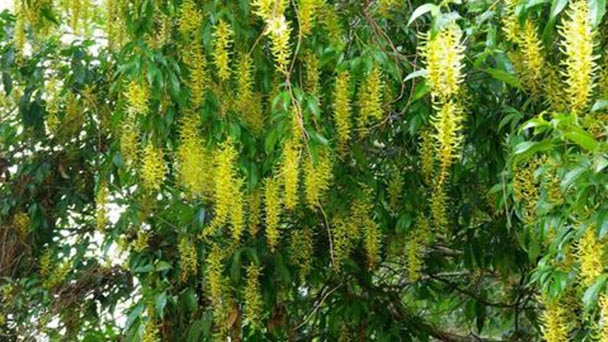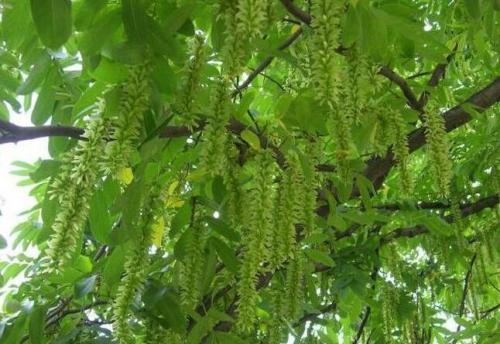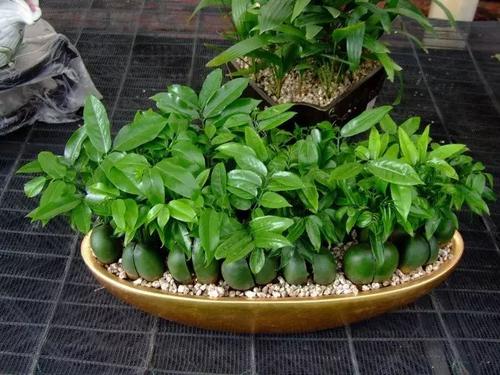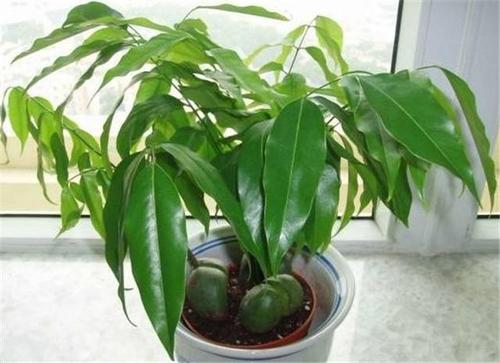How to care for Australian Chestnut
Written by Maggie
Dec 25 2020

Australian Chestnut belongs to middle trees, odd pinnate compound leaves. Many people start growing it for decorating homes. How to care for Australian Chestnuts if its leaves turn yellow and dry? Lets take a look together.

How to care for Australian chestnut leaves yellowing
Australian chestnut leaves turned yellow, which actually can be treated. It may be the result of the lack of light. The first thing you need to do is give the appropriate clip, and then transfer it to the sun. If the growth of the soil is unwell, we need to change its suitable for the growth of the soil. If it is improper watering, we need to cut off the rotten roots, replace the new soil.
1.Appropriate pruning
If the australian chestnut leaves start turning yellow, it may be caused by the uneven lighting. First we need to give the Australian Chestnut proper pruning, the Australian Chestnut thick part of the sparse processing, and then put it in the sun, constantly rotating potted, so that it can get enough light.
2. Replace soil
Inappropriate soil plate or soil will also affect the Australian Chestnut in the soil growth, making the Australian Chestnut leaves yellow. Then we need to replace the soil, can use rotten leaf soil, peat soil, coarse sand in accordance with the ratio of 4:4:2 mixed basin soil, and also need to add an appropriate amount of organic fertilizer.
3. Strengthen management
When the Australian Chestnut fertilizer is out of date, and causes the Australian chestnut leaves to turn yellow. At this time, the Australian chestnut leaves need to be dug out from the soil, and then the decayed roots are cut off and replanted in the new soil, so that it can gradually restore to life.
4. Spray drugs
If Australian Chestnut is accidentally harmed by diseases and insects in the process of growing, it is not only necessary to appropriate pruning, change the soil, strengthen water and fertilizer management, but also to spray corresponding diseases and insects, so that they can grow well in the soil.

How to care for Australian Chestnut leaves dry
1.The soil
The soil should be made in more acidic soils such as red loam, yellow loam and so on. Australian Chestnut is an acid - loving plant. When the soil of Australian Chestnut is alkaline, the leaves will dry up and grow badly. We need to timely replace acidic soil.
2. Water
In the process of Australian Chestnut growing, the amount of watering is one of the important factors affecting the growth of Australian Chestnut. When watering too much, it will lead to the basin bottom water storage too much, resulting in partial erosion of the root system. If not watered enough, Australian Chestnut leaves will appear soft, yellow symptoms. This time we need timely replenishment of water, or placed in a ventilated place will be the accumulation of water evaporation.
3. Fertilization
Australian Chestnut, like other plants, needs fertilizer during the growing process. But the frequency and dose of fertilization also need to be right. If too much fertilizer is applied, the Australian Chestnut root system will not be fully absorbed and digested, resulting in root burning. And if fertilization is too little, it will cause insufficient nutrient supply, resulting in Australian Chestnut poor growth.
4. Illumination
Photosynthesis is needed by most plants, Australian Chestnut is no exception. And if the Australian Chestnut is placed for a long time in a dark, light insufficient place for maintenance, then will also cause the Australian Chestnut leaves to appear yellow or even fall off the situation.It's time to move it to a sunny place.
5. Temperature
The best temperature for Australian Chestnut growing is around 20 ~ 30℃. And in the summer high temperature, when the temperature reaches 30℃ above, the Australian Chestnut body moisture evaporation rate will be relatively fast, this time will also lead to the Australian Chestnut leaves dry phenomenon. What needs to be done at this time is to conduct timely cooling and humidifying processing.

Latest Updated
- Benefits of Bugleweed - 7 Science-backed Health Benefits
- Bugleweed Dangers & Side Effects - Is It Poisonous?
- How to Plant Evergreen Trees - What You Should Know
- When to Plant Evergreens - Grow Guide for Evergreen Trees
- 12 Wonderful Evergreen Shrubs for Your Garden
- 12 Popular Evergreen Plants with Pictures for Beginners
- When And How To Prune A Lilac Bush Like a Pro
- How to Grow & Care for Lilac Vine (Hardenbergia Violacea)
- Japanese Lilac Tree (Syringa Reticulata) Care & Propagation Guide
- Shumard Oak Pros and Cons - What to Know
Popular Articles
- Winter maintenance of Antirrhinum Majus
- How to Grow Terminalia Mantaly Tree
- How to Grow and Care for Crossostephium Chinense
- How to grow Antirrhinum Majus in spring
- Peristeria Elata (Dove Orchid) Profile: Info & Care Guide
- Underwatered Snake Plant (Sansevieria Trifasciata) - Signs And How To Fix
- How to Care for Brazilian Jasmine Plant (Mandevilla Sanderi)
- How to Grow & Care for Graptopetalum Purple Delight in Summer
- Rosa Chinensis (China Rose): Plant Growing & Care Tips
- How to Care for Baby Sun Rose (Aptenia Cordifolia)